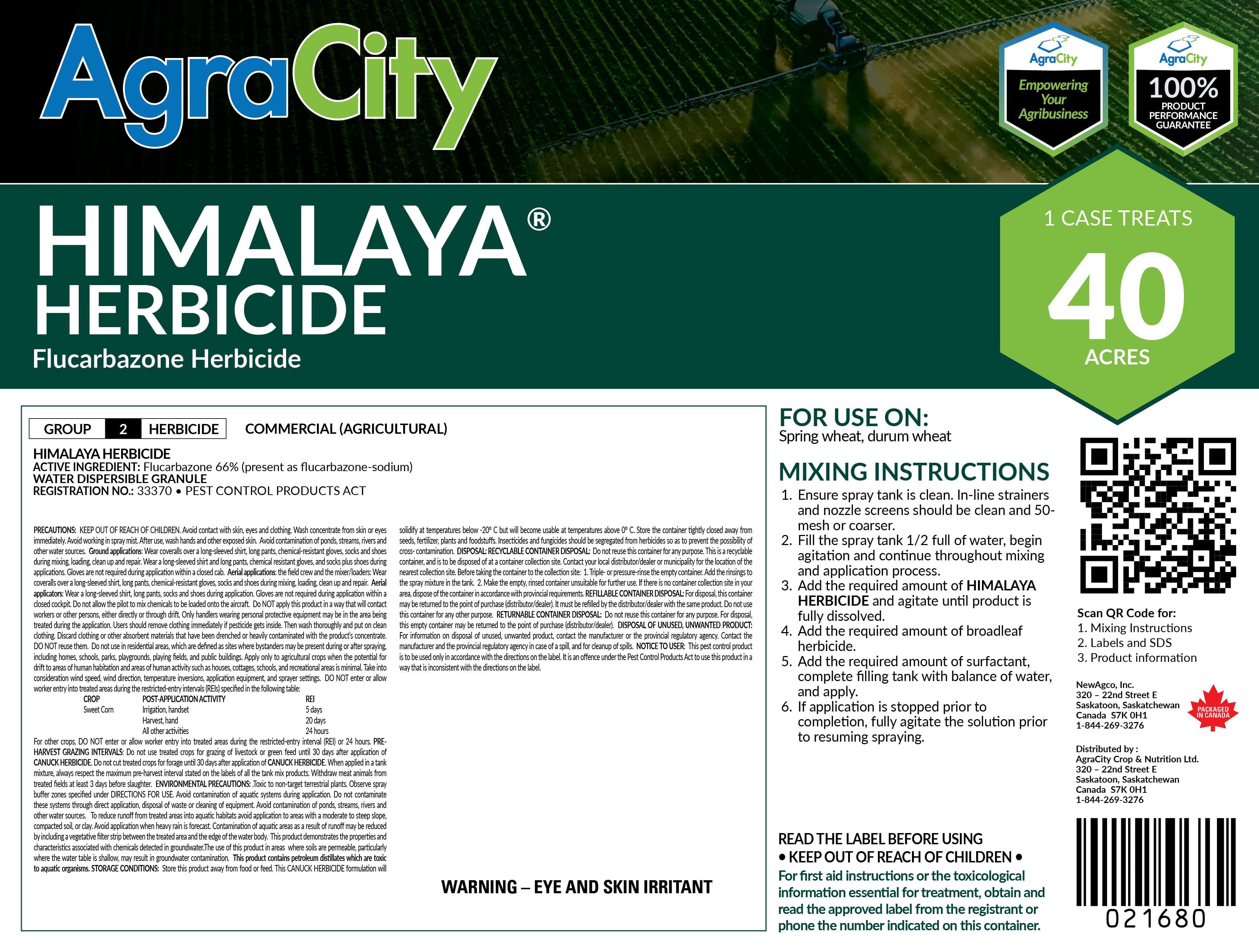HIMALAYA® HERBICIDE
group
2Why use HIMALAYA® HERBICIDE?
- Same actives as Everest®
- Proven control of wild oats and grass weeds
- Use in all soil zones
- Systemic mode of action
- Control of Group 1 resistant wild oats
- The early window of application for highest yields
- Excellent crop safety
- Great tank mix partner with FOXXY® HERBICIDE or BATTLEFRONT® HERBICIDE based products
- Grow most major crops the year after application
- Low rate, easy to use
- Proven wild oat and grass weed control value at an affordable price
Please refer to the product label for complete and detailed information about this product. It contains essential guidelines and specifications to ensure proper usage and safety.
Active Ingredients
When to apply on crops
1-4 leaf, 2 tillers
When to apply on weeds
Grass weeds: 1-4 leaf, 2 tillers
Broadleaf weeds: 2-6 leaf
Water volume
5-10 US gallons/ac (20-40L/ac)Rainfast period
1Weeds
controlled - In-crop
1 Including Group 1 resistant biotypes
2 Group 2 tolerant biotypes will not be controlled
Re-Cropping Options
Wheat - Spring
Wheat - Durum
Barley
Canary seed
Canola - Clearfield®
Canola - LibertyLink®
Canola - Roundup Ready®
Corn - Conventional
Corn - Roundup Ready®-Liberty tolerant
Corn - Roundup Ready®
Corn - Roundup Ready®-Dicamba-Liberty tolerant
Flax
Peas
Triticale
Wheat - Winter
1Crop can be grown 1 year after application
Wheat - Spring
Wheat - Durum
Barley
Canary seed
Canola - Clearfield®
Canola - LibertyLink®
Canola - Roundup Ready®
Chickpeas
Corn - Conventional
Corn - Roundup Ready®-Liberty tolerant
Corn - Roundup Ready®
Corn - Roundup Ready®-Dicamba-Liberty tolerant
Dry Beans
Fababeans
Flax
Lentils - Conventional
Lentils - Clearfield
Mustard
Oats
Peas
Soybeans - Conventional
Soybeans - Roundup®-2,4-D
Soybeans - Roundup®-2,4-D-Dicamba
Soybeans - Roundup®-Liberty tolerant
Sunflowers - Clearfield
Sunflowers - Conventional
Triticale
Wheat - Winter
1Crop can be grown 2 years after application
Wheat - Spring
Wheat - Durum
Barley
Canary seed
Canola - Clearfield®
Canola - LibertyLink®
Canola - Roundup Ready®
Chickpeas
Corn - Conventional
Corn - Roundup Ready®-Liberty tolerant
Corn - Roundup Ready®
Corn - Roundup Ready®-Dicamba-Liberty tolerant
Dry Beans
Fababeans
Flax
Lentils - Conventional
Lentils - Clearfield
Mustard
Oats
Peas
Soybeans - Conventional
Soybeans - Roundup®-2,4-D
Soybeans - Roundup®-2,4-D-Dicamba
Soybeans - Roundup®-Liberty tolerant
Sunflowers - Clearfield
Sunflowers - Conventional
Triticale
Wheat - Winter
1Crop can be grown 3 years after application
Mixing Instructions
- Ensure spray tank is clean. In-line strainers and nozzle screens should be clean and 50-mesh or coarser.
- Fill the spray tank 1/2 full of water, begin agitation and continue throughout mixing and application process.
- Add the required amount of HIMALAYA® HERBICIDE and agitate until product is fully dissolved.
- Add the required amount of broadleaf herbicide.
- Add the required amount of surfactant, complete filling tank with balance of water, and apply.
- If application is stopped prior to completion, fully agitate the solution prior to resuming spraying.

